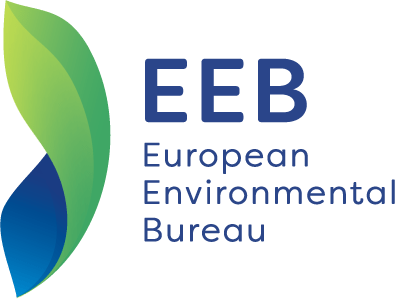EU offshore wind strategy must ensure protection of marine habitats
NGOs welcome a proposal to scale up offshore windfarms but raise concerns over its potentially negative impact on marine habitats.
UPDATE: This press release was updated at 2:30pm after the publication of the strategy
The European Commission unveiled today its masterplan to increase offshore wind capacity as part of its clean energy transition and climate neutrality plans.
The strategy – one of the pillars of the European Green Deal – is set to gather almost €800 billion for the construction of new windfarms in EU waters. The Commission aims to achieve at least 300GW of offshore wind capacity by 2050, which represents a 25-fold increase compared to current levels.
The European Environmental Bureau (EEB) cautiously welcomed the plan, arguing that wind power capacity will need to be scaled up in the next 10 to 30 years to help Europe achieve climate neutrality.
However, the EEB called for the adoption of complementary measures aimed at monitoring its impact on marine habitats and prevent biodiversity loss.
The construction and operation of fixed-bottom turbines can potentially harm sea mammals, birds and fish, which may be affected by the loud noise in their search for food and throughout migratory routes.
Sergiy Moroz, senior policy officer for biodiversity at the EEB, said:
We need clean energy just as much as we need healthy seas if we want to avert the ongoing climate and environmental crises – both of which threaten our own survival .
The European Commission and national governments need to ensure adequate protection of vulnerable marine ecosystems in line with the EU’s target to protect and effectively manage 30% of our seas. This target represents a significant increase from the 11% that is currently protected and therefore requires a strong commitment.
Jonathan Bonadio, policy officer for renewable energy and grids at the EEB, said:
The full decarbonisation of Europe’s energy mix doesn’t need to come at the expense of our seas.
Our recently published energy scenario confirms that offshore wind would be pivotal to make a smooth transition to a net zero Europe by 2040. However, the expansion of offshore wind capacity needs a thorough environmental and strategic impact assessment at project and planning level to minimise impacts on the marine environment.
Notes to Editors
- Electricity generated by wind turbines (onshore and offshore) is currently one the cheapest sources available. A further decrease in installation costs would make it a driver for the uptake of renewable energy and electrification.
- In their recently published Paris-Agreement Compatible Scenario for Energy Infrastructure (PAC) energy scenario – developed in cooperation with grid operators – the EEB and CAN Europe estimate that every fifth kilowatt-hour of wind power could come from an offshore turbine in 2030, and that offshore wind farms could contribute to 818TWh of electricity production in 2040. See the report’s chapter on wind power here.
- The development of offshore renewable energy must also comply with the EU environmental legislation and the integrated maritime policy. Designated sea spaces for offshore energy exploitation should be compatible with biodiversity protection, take into account socio-economic consequences for sectors relying on good health of marine ecosystems and integrate as much as possible other uses of the sea. Maritime spatial planning is an essential and well-established tool to anticipate change, prevent and mitigate conflicts between policy priorities while also creating synergies between economic sectors.
- The rest of the energy supply would be based on existing, proven and competitive technologies such as solar PV, onshore wind or heat pumps. The stability of the energy system will be ensured by flexibility options such as storage, demand-response, dispatchable renewables and grid extensions.
- For offshore wind to benefit local communities and mitigate its environmental impacts, it is crucial to deploy community-owned schemes. Local communities and businesses should be the first to benefit from offshore energy.
- A Blue Manifesto for Europe’s seas, by Seas At Risk

